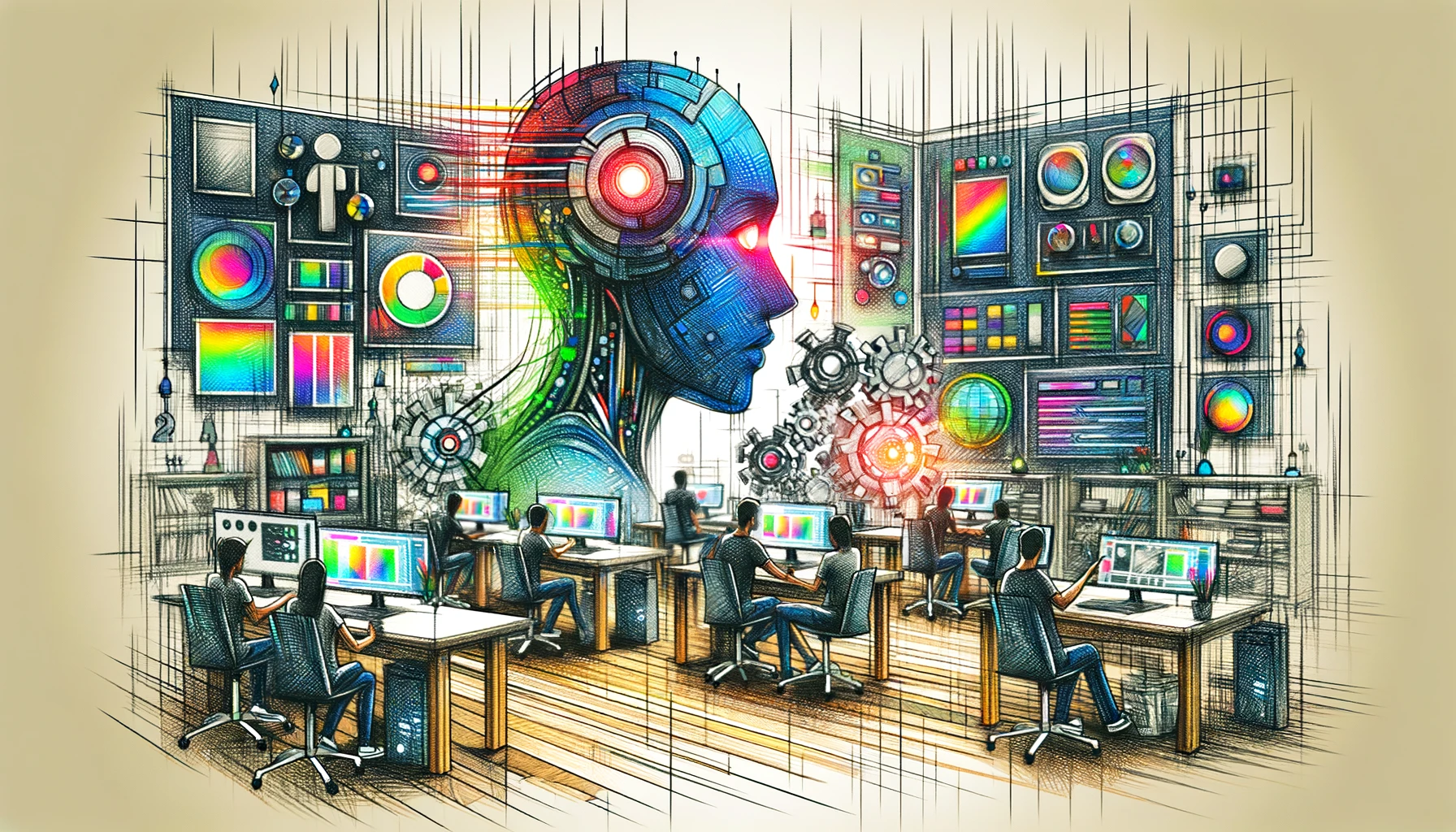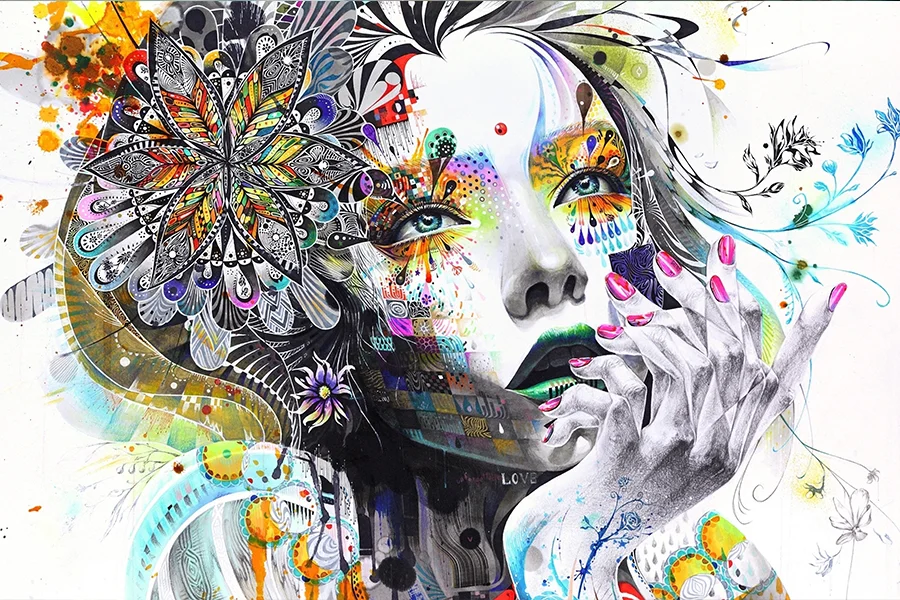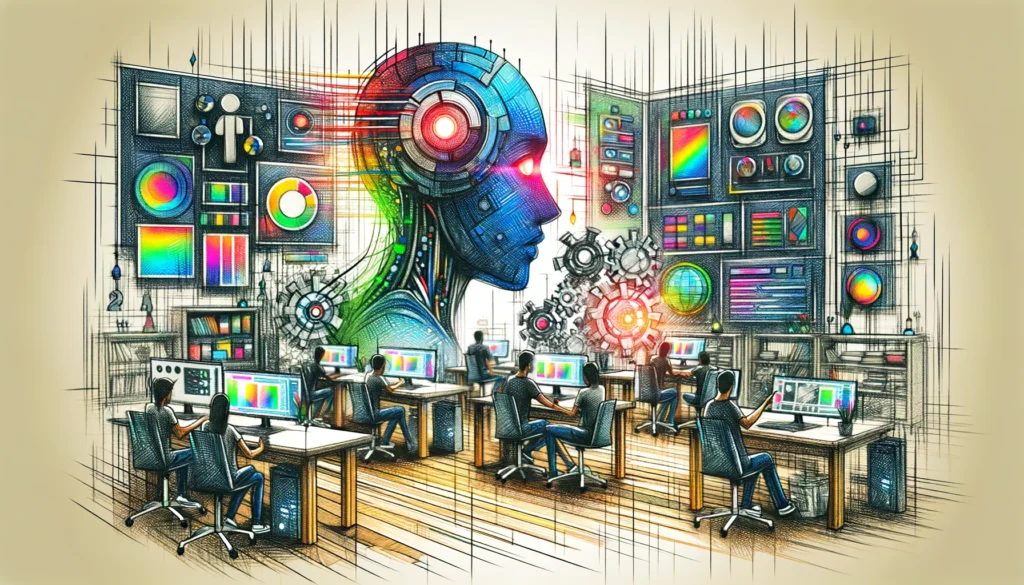Your cart is currently empty!

seoagency@example.com

450 NW Couch Street, Oregon 97209

+(00) 123 4567 890

Introduction
Graphic design continues to redefine creativity in 2025, driven by rapid technological advancements and shifting cultural priorities. From AI-powered tools to eco-conscious practices, this year’s trends reflect a blend of innovation, nostalgia, and responsibility. This blog explores how designers are navigating these changes to create impactful, forward-thinking visuals. Evolution of Graphic
1. AI-Powered Design: Redefining Creativity

Artificial Intelligence has become an indispensable tool, automating repetitive tasks like image resizing, layout adjustments, and color palette generation. Platforms like Canva and Adobe Spark now integrate AI to make design accessible to non-designers, democratizing creativity.
Key Developments:
- Generative Design: AI tools like Midjourney and DALL-E enable rapid prototyping, generating logos, illustrations, and layouts in seconds.
- Personalization: Algorithms analyze user data to create hyper-targeted visuals for marketing campaigns.
- Collaboration: Designers use AI to refine concepts, freeing time for strategic thinking.
While concerns about AI replacing designers persist, the focus in 2025 is on augmented creativity-using AI as a co-pilot rather than a replacement.
2. 3D and Immersive Design Elements

Hyper-realistic 3D graphics and AR/VR integration dominate branding and advertising.
- Applications: Product visualizations, interactive ads, and virtual showrooms.
- Tools: Blender, Unreal Engine, and Adobe Substance 3D enable lifelike textures and lighting.
- User Experience: Motion graphics and animations transform static designs into dynamic narratives.
For example, gaming and e-commerce brands leverage 3D to create immersive shopping experiences, blurring digital and physical realms.
3. Bold Minimalism: Less is More, But Louder
A refined take on minimalism combines clean layouts with striking contrasts.
- Features: Oversized typography, monochrome palettes with neon accents, and strategic whitespace.
- Purpose: Enhances visual hierarchy, ensuring key messages cut through digital noise.
- Examples: Tech startups and luxury brands adopt this style for its timeless yet bold appeal.
4. Sustainability in Design: From Concept to Execution
Eco-conscious practices are now non-negotiable.
- Digital-First Approach: Reducing print waste through web-based campaigns.
- Materials: Recycled paper, soy-based inks, and biodegradable packaging for physical designs.
- Visual Messaging: Earthy palettes, organic shapes, and nature-inspired motifs resonate with eco-aware audiences.
Brands like Patagonia lead with carbon-neutral branding, proving sustainability and aesthetics can coexist.
5. Retro Revival Meets Modern Tech

Nostalgia-driven designs from the ’70s–2000s are reimagined with a contemporary edge.
- Elements: Grainy textures, retro-futuristic fonts, and Y2K-inspired neon gradients.
- Execution: Modern layouts balance vintage elements, avoiding kitsch.
- Case Study: Pepsi’s 2023 heritage redesign demonstrates how retro aesthetics build emotional connections.
6. Inclusive and Accessible Design
Designers prioritize accessibility through:
- Color Contrast: Ensuring readability for visually impaired users.
- Cultural Sensitivity: Avoiding stereotypes and representing diverse communities.
- Tools: AI-powered accessibility checkers like Stark and Contrast.
7. Motion Graphics: Capturing Short Attention Spans
Animated logos, GIFs, and micro-interactions dominate social media and websites.
- Benefits: Increases engagement by 40% compared to static visuals.
- Tools: After Effects, Lottie, and Rive simplify animation workflows.
8. Generative Design: The Future of Customization
AI-generated patterns and layouts enable infinite variations, ideal for personalized marketing.
- Use Cases: Unique packaging designs, dynamic website backgrounds, and NFT art.
- Ethics: Designers debate ownership rights for AI-generated assets.
Content Ideas for Graphic Design Graphics
1. Portfolio Highlight
- Visual: Project image or mockup
- Text: Modern brand identity for Clean, bold, and versatile.
- CTA: Explore the full project
2. Design Process
- Visual: Step-by-step carousel or process chart
- Text: How I take your brand from idea to identity.
- CTA: Let’s build something great together.
3. Before & After
- Visual: Old vs. new design comparison
- Text: Outdated to outstanding. Swipe to see the transformation.
- CTA: Ready for a brand glow-up?
4. Design Tips/Education
- Visual: Typographic or color hierarchy tips
- Text: 3 font pairing rules every designer should know.
- CTA: Follow for more design wisdom.
5. Client Testimonial
- Visual: Quote graphic with client photo or logo
- Text: Working with [metroshoes.shop] transformed our brand.
- CTA: See the full project in my bio.
6. Promotional Offer
- Visual: Bold sale/offer graphic
- Text: “New clients get 20% off their first design project!”
- CTA: “DM to book your spot.”

Leave a Reply